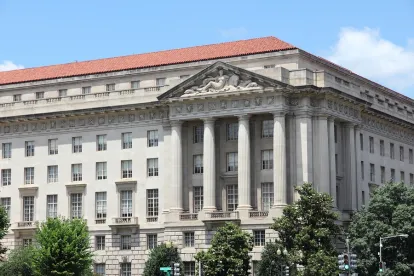The directive establishes a new procedural framework for the settlement of litigation intended to effect regulatory changes.
US Environmental Protection Agency (EPA) Administrator Scott Pruitt issued an Agency-wide directive on October 16 intended to prevent lawsuit settlement practices that Mr. Pruitt said circumvent due process and EPA transparency standards. The directive, titled “Directive Promoting Transparency and Public Participation in Consent Decree and Settlement Agreements” (the Directive) is aimed at so-called “sue and settle” tactics. Agency critics have argued that the Agency has, in cases where an outside group sues the EPA and demands that certain regulatory steps be taken or that entirely new regulations be put in place, been too likely to settle such matters under terms disadvantageous to regulated parties and in ways that unduly limit the Agency’s lawful rulemaking authority. Such suits are typically filed alleging that the EPA has failed to fulfill its legal obligations under the Clean Air Act, Clean Water Act, or other major environmental statutes.
The Directive asserts that such suits, combined with generous settlement terms for the plaintiffs, were used by prior administrations and environmental groups to establish and commit the Agency to policy changes, while circumventing traditional rulemaking procedures. Citing notions of due process, rule of law, and cooperative federalism, the Directive prohibits the practice of “regulation through litigation” and seeks to curb alleged “backroom deals” and “consent decrees and settlement agreements that appeared to be the result of collusion with outside groups.” In order to curb these practices, the Directive establishes a new procedural framework for future EPA consent decrees and settlement agreements, which includes longer notice and public comment periods, expanded publication and notice requirements, mandatory involvement of state regulatory bodies in settlement discussions, and a prohibition on agreeing to pay attorney fees in any settlement agreements the Agency enters in such cases.
The EPA’s Rationale
In a memorandum titled, “Adhering to the Fundamental Principles of Due Process, Rule of Law, and Cooperative Federalism in Consent Decrees and Settlement Agreement,” published concurrently with the Directive (the Memorandum), EPA sets forth the rationale for the Directive, explaining that it was inspired by past practices of the EPA wherein, “behind closed doors, EPA and outside groups agreed that EPA would take an action with a certain end in mind, relinquishing some of its discretion over the Agency’s priorities and duties and handing them over to special interests and the courts. When negotiating these agreements, EPA excluded intervenors, interested stakeholders, and affected states from those discussions. Some of these agreements even reduced Congress’ ability to influence policy.”
In this Memorandum, EPA states that “regulation through litigation” or “sue and settle” practices violate due process, the rule of law, and cooperative federalism. The Agency further explains that, when EPA uses consent decrees or settlement agreements “to bind the Agency to proceed with a rulemaking with a certain end in mind on a schedule negotiated with the litigants,” the Agency risks bypassing the transparency and due process safeguards enshrined in the Administrative Procedures Act and other statutes. The Memorandum concludes that this process violates the notice and public participation requirements that the US Congress established in the relevant statutes, and therefore violates the public’s due process rights to provide its views on proposed regulatory decisions.
The Memorandum further states that “sue and settle” practices undermine the rule of law and separation of powers by “improperly elevat[ing] the powers of the federal judiciary to the detriment of the executive and legislative branches.” Under the view expressed in the Memorandum, taken to its extreme, sue and settle strategy can allow executive branch officials to avoid political accountability by yielding their authority to the courts, thereby insulating Agency officials from criticism.
Finally, the Memorandum explains that fundamental notions of federalism require the EPA to “work cooperatively with states to encourage regulations instead of compelling them and to respect the separation of powers.” The Memorandum states that past EPA practices undermined federalism principles by excluding states from meaningfully participating in procedural and substantive EPA actions. The Directive, therefore, seeks to increase the involvement of state regulators in the litigation process.
Procedural Framework
In an effort to “promote transparency and public participation in the consent decree and settlement process”, the Directive lays out a procedural framework that the EPA is now required to follow:
-
Within 15 days of the Agency receiving an intent to sue notice from potential litigant(s), EPA’s Office of General Counsel will publish that notice online.
-
When EPA receives actual notice of a complaint or a petition for review being filed in federal court regarding an environmental law, regulation, or rule in which the Agency is a defendant or respondent, the Office of General Counsel will publish online that complaint or petition for review within 15 days of receiving service.
-
EPA will directly notify any affected states and/or regulated entities of a complaint or petition for review within 15 days of receiving service. It will be the policy of the Agency to take any and all appropriate steps to achieve the participations of affected states and/or regulated entities in the consent decree and settlement agreement negotiation process. Accordingly, EPA will seek to receive the concurrence of any affected states and/or regulated entities before entering into a consent decree or settlement agreement.
-
Within 30 days of the Directive, EPA will publish online a searchable, categorized list of the consent decrees and settlement agreements that continue to govern Agency actions, providing a brief description of the terms of each consent decree and settlement agreement, including attorney fees and costs paid. EPA will update this list by publishing any new final consent decree or settlement agreement within 15 days of its execution.
-
EPA will not enter into a consent decree with terms that the court would have lacked the authority to order if the parties had not resolved the litigation. EPA also will not enter into a consent decree or settlement agreement that converts an otherwise discretionary duty of the Agency into a mandatory duty to issue, revise, or amend regulations.
-
If EPA agrees to resolve litigation through a consent decree or settlement agreement, and therefore there is no “prevailing party,” then the Agency will seek to exclude the payment of attorney fees and costs to any plaintiff or petitioner in the litigation. EPA will not seek to resolve the question of attorney fees and costs “informally.”
-
If a consent decree or settlement agreement includes any deadline by which EPA must issue a final rule, the Agency must provide sufficient time (1) to modify its proposed rule if necessary, consistent with applicable laws and guidance on rulemaking, including any required interagency review or consultation, (2) to provide adequate notice and comment on the modified proposal, and (3) to conduct meaningful Agency consideration of the comments received on the modified proposal.
-
EPA will post online for review and comment by the public any proposed consent decree lodged in federal court or draft settlement agreement to resolve claims against the Agency. EPA will also publish a notice of the lodging of the proposed consent decree or draft settlement agreement in the Federal Register.
-
Where appropriate, [the Administrator] reserve[s] the right to exercise [his] discretion and permit EPA to deviate from the procedures set forth in the directive. In no circumstances, however, will [the Administrator] permit the Agency to violate its statutory authority or to upset the constitutional separation of powers.
Implications
While the new procedures are effective immediately, the impact of the Directive remains to be seen. Private parties can and will continue to sue EPA, and EPA will still have to address these lawsuits through the litigation process. The policy shift does not hamper a private actor’s right to sue. However, new procedures identified in the Directive— such as the prohibition on payment of attorney fees in settlement agreements, mandatory public comment periods, and mandatory involvement of state regulators in settlement discussions,— may discourage attempts to force regulation through litigation and likely will increase the scrutiny applied to any settlement of such claims that would require implementation of regulatory changes.
Some of the procedural steps, such as publication of notices of intent to sue online and publication of consent decrees in the Federal Register, are already in effect as to certain statutes. For example, posting of such notices is currently required by Section 304 of the Clean Air Act (CAA); Section 505(a)(2) of the Clean Water Act (CWA); Section 1449(a)(2) of the Safe Drinking Water Act (SDWA); Section 11(g)(1)(A) of the Endangered Species Act (ESA); Section 7002(a)(2) of the Resource Conservation and Recovery Act (RCRA); Section 310(a)(2) of the Comprehensive Environmental Response Compensation and Liability Act (CERCLA); and Section 326(a)(1)(B) or (C) of the Emergency Planning and Community Right-to-Know Act (EPCRA). Current notices of intent to sue can be found online here.
Notwithstanding that the directive may formalize certain practices already in effect, the commitment to include the potentially regulated parties and affected states in any settlement discussions will provide interested parties a greater voice going forward on the commitments of the Agency. Such commitments, in turn, have long affected the Agency’s regulatory agenda and influenced which rulemakings are given priority in order to avoid the Agency being in violation of a court-approved settlement. In addition, the new procedures to routinely announce notices of intent to sue will give regulated entities that stand to be affected a better “heads up” of litigation that may affect the regulatory agenda and give such parties an improved chance to be heard on those issues from the outset, rather than only after a proposed settlement is formally published for comment.




 />i
/>i

